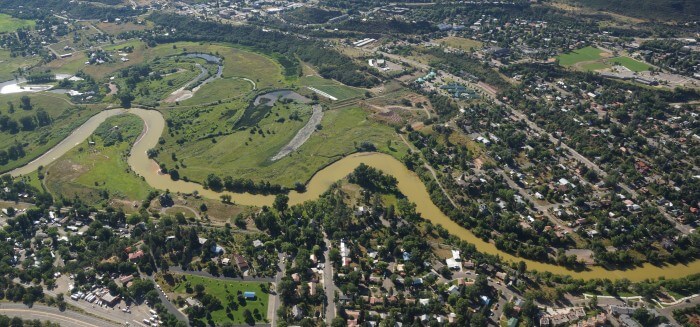If emotions were assigned a color, along the banks of the Animas and San Juan rivers, the color of fear is muddled orange.
In the turbulent wake of the Gold King Mine accident, it is hard to miss the signs of community trauma.
Friday evening, I watched kids playing with a soccer ball at Rotary Park. An errant kick sent the ball down the bank and into the Animas. As the gaggle of would-be soccer phenoms rushed to grab the ball from an eddy, parents surged forward to keep their children back, to keep them safe.
We have begun our pilgrimage back to the water’s edge but do so wracked by cognitive and emotional dissonance. The rivers that previously knew only our love now sense our fear.
As a community, we must break down the barrier that keeps us from our river. To start that process, one thing we need is better information.
The science is not in on the health of the Animas. Period. I want to root for the Environmental Protection Agency to succeed in the wake of this accident, but the agency is making my job very difficult.
The dribble of data released by public agencies has been incomplete and lacks the aquatic and human health context necessary to help us make heads or tails of it. What we want is actually quite simple.
First, expand testing protocols to include a larger set of potential contaminants. The EPA’s current testing protocols do not include all chemicals of concern, and requests for expanded testing have been met unenthusiastically.
Second, for each chemical, describe the concentrations and exposure durations that trigger human and aquatic health concerns.
Third, plot the observed concentrations of all chemicals in relation to health thresholds before, during and after the spill.
Fourth, commit to continued sampling with data presented in real time or as close to real time as possible.
In addition to improved and ongoing water column testing, more robust and transparent investigation into contaminated sediments left behind by the plume is crucial.
Where are the sediments? What’s in them? How does the community avoid them, especially if reactivated into the water column?
I appreciate the voices in our community that want people to stop feeling fear. They are acting from their own place of love – a love for how things were and how they deeply desire them to be again.
To those voices I would say this: Fear – rational or irrational – is not overcome by feats of bravado (Thirsty, governor?) or well-intended but incomplete assessments of watershed health. This community trauma will be overcome with trusted and context-rich presentations of data, safeguards against potential exposure pathways from remaining pollutants and time.
As we work to address these fears, let us also pause to offer an apology to the river. Yes, an EPA contractor made a colossal mistake in causing this spill, but that mistake was preceded by more than two decades of watershed apathy. Every moment of every day, our riverways have been insulted by pollution from mines. That pollution has degraded fisheries and added to a background of pollution our community tacitly accepted.
No longer. This spill made visual what has been happening in less acute but perhaps more pernicious ways for ages. To truly honor the river and our neighbors in the wake of this spill, we must mobilize the political will necessary to finally clean up a longstanding legacy of mining waste.
We will embrace our local waters without fear only after we accept our role as their keepers.





Pre-event conditions: Durango, Southern Ute and Farmington have been playing in the sediments for decades. In 2007, when the City fixed Smelter Rapids for an umph time, no one got sick. No fish died. In the most recent RICD dredge of Smelter Rapids, no one got sick. No fish died. Does anyone know that the two FEET of sediments left by the… oh… Smelter there (for gold/silver, then uranium) have been washed over in spring flows for decades? And no one got sick. And no fish died. And with this pulse from Gold King: No one got sick. One fish died. We did not see 10,000 dead fish float down to Farmington.
Calm down, world. The Upper Animas does this a few times every every spring. If you weren’t concerned about “pre Gold King levels” before, why are you freaking out about it now. Your bugs, fish, cows and dogs have been playing in it for decades. Yes, we need comprehensive solutions, but calm down, please. This is from May 31, long before Gold King.
https://www.facebook.com/tom.schillaci.37/videos/vb.652545503/10155683474275504/?type=3&theater